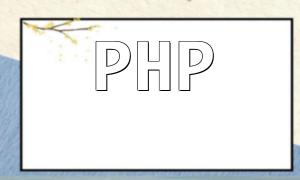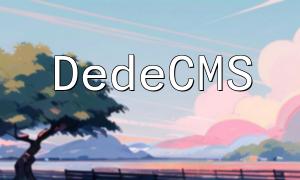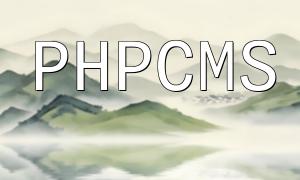Image processing is a common requirement in web development. Whether it's generating captchas, cropping and resizing images, or converting image formats, working with image data types is essential. In PHP, the main tools for these tasks are the GD library and the ImageMagick library.
The GD library is a built-in PHP extension that offers a rich set of functions to manipulate image data. Here are some common examples.
$width = 400; // Width of the image
$height = 200; // Height of the image
$image = imagecreatetruecolor($width, $height); // Create a blank image
$backgroundColor = imagecolorallocate($image, 255, 255, 255); // Set background color to white
imagefill($image, 0, 0, $backgroundColor); // Fill background color
header('Content-type: image/png'); // Set HTTP header to output PNG image
imagepng($image); // Output the image
imagedestroy($image); // Destroy the image resource
$sourceFile = 'source.jpg'; // Source image filename
$destinationFile = 'destination.png'; // Destination image filename
$sourceImage = imagecreatefromjpeg($sourceFile); // Load the source image
$imageWidth = imagesx($sourceImage); // Get image width
$imageHeight = imagesy($sourceImage); // Get image height
$destinationImage = imagecreatetruecolor($imageWidth, $imageHeight); // Create destination image
imagecopy($destinationImage, $sourceImage, 0, 0, 0, 0, $imageWidth, $imageHeight); // Copy source image to destination
header('Content-type: image/png'); // Set HTTP header to output PNG image
imagepng($destinationImage, $destinationFile); // Save destination image
imagedestroy($sourceImage); // Destroy source image resource
imagedestroy($destinationImage); // Destroy destination image resource
$sourceFile = 'source.jpg'; // Source image filename
$destinationFile = 'destination.jpg'; // Destination image filename
$destinationWidth = 300; // Destination image width
$destinationHeight = 200; // Destination image height
$sourceImage = imagecreatefromjpeg($sourceFile); // Load the source image
$sourceWidth = imagesx($sourceImage); // Get source image width
$sourceHeight = imagesy($sourceImage); // Get source image height
$destinationImage = imagecreatetruecolor($destinationWidth, $destinationHeight); // Create destination image
imagecopyresampled($destinationImage, $sourceImage, 0, 0, 0, 0, $destinationWidth, $destinationHeight, $sourceWidth, $sourceHeight); // Resize source image to destination
header('Content-type: image/jpeg'); // Set HTTP header to output JPEG image
imagejpeg($destinationImage, $destinationFile); // Save destination image
imagedestroy($sourceImage); // Destroy source image resource
imagedestroy($destinationImage); // Destroy destination image resource
Besides the GD library, PHP can also use the ImageMagick library for image processing. ImageMagick offers more advanced features and greater flexibility. Here's a basic example.
$sourceFile = 'source.jpg'; // Source image filename
$destinationFile = 'destination.jpg'; // Destination image filename
$destinationWidth = 300; // Destination image width
$destinationHeight = 200; // Destination image height
$imagick = new Imagick($sourceFile); // Load source image
$sourceWidth = $imagick->getImageWidth(); // Get source image width
$sourceHeight = $imagick->getImageHeight(); // Get source image height
$imagick->cropThumbnailImage($destinationWidth, $destinationHeight); // Resize source image to destination size
$imagick->writeImage($destinationFile); // Save destination image
$imagick->destroy(); // Destroy image resource
The examples above demonstrate how to effectively use both the GD library and ImageMagick in PHP for image handling. Whether creating new images, loading and saving files, or cropping and resizing, these libraries can meet a wide range of needs. Choose the library that best suits your project requirements.









